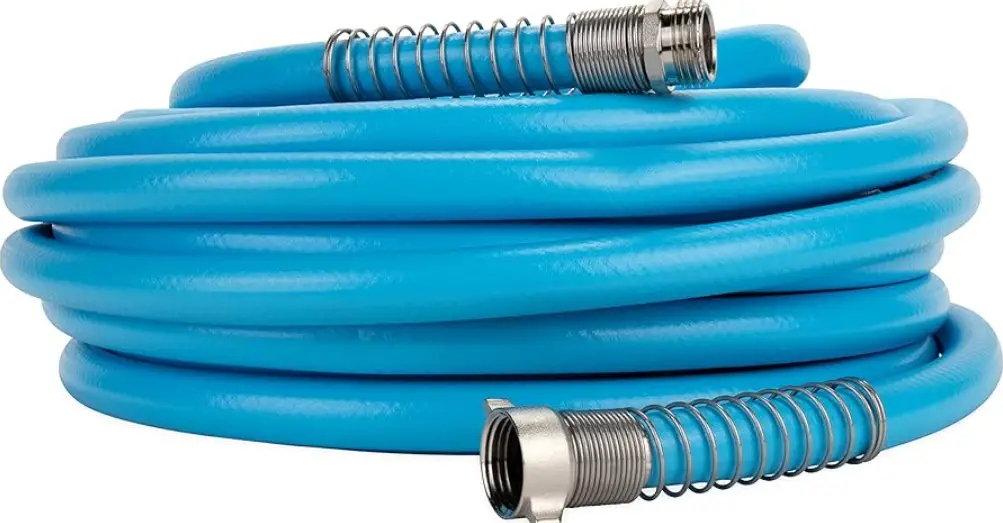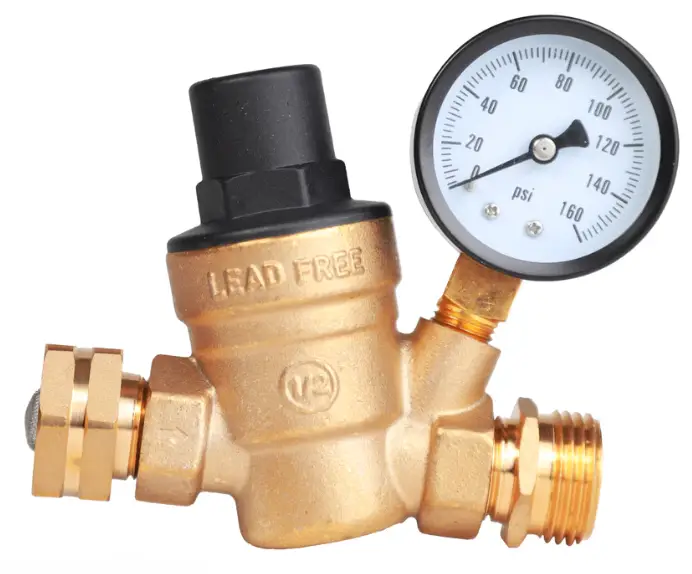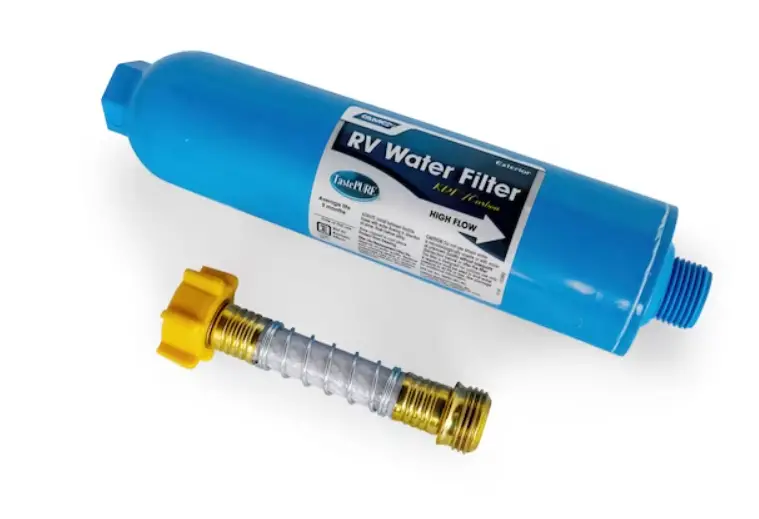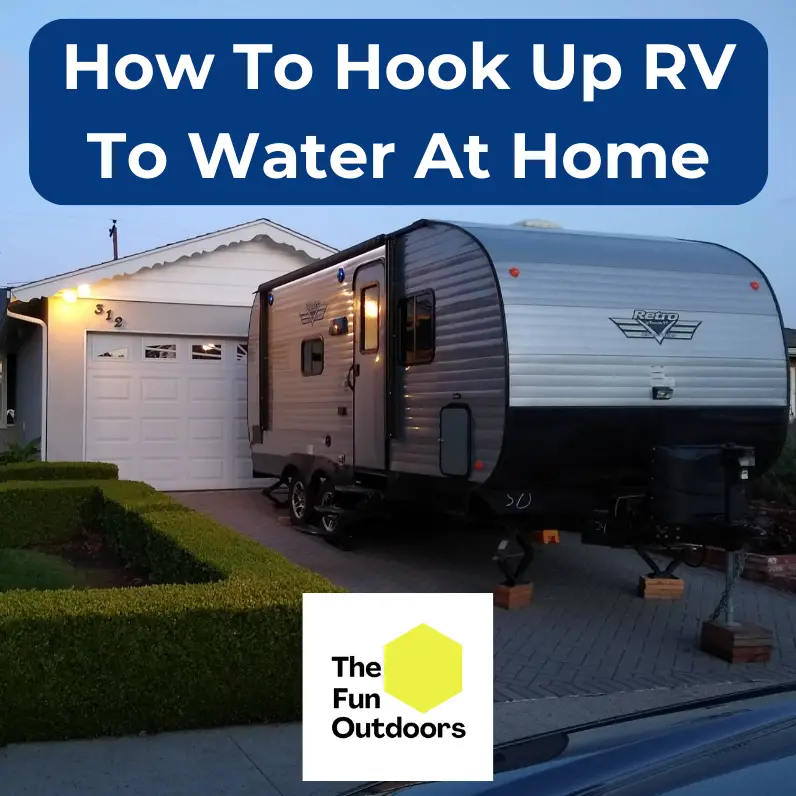Whether it’s for a guest or for a driveway sleepover, sometimes you’ll want to hook up your RV to your home water supply. To hook up water to your RV at home, you’ll need to have a few pieces of equipment on hand like a water hose and a water pressure regulator, and you’ll need to connect the water hose to your house water supply and then to your RV.
Quick Facts:
- Hooking up your RV to your house water supply is a simple process that requires a few pieces of equipment like a hose and a water pressure regulator.
- It’s important to use a water filter when possible to ensure the water is clean.
- Managing water pressure is key to avoiding damage to your RV’s plumbing.
How To Hook Up An RV To House Water Supply
If you’re planning to park your RV at home and want to hook it up to a house water supply, it’s not as difficult as you might think.
With the right equipment and a bit of know-how, you can have a steady supply of water for your RV without having to rely on a separate water tank.
Here are the steps to hook up your RV to a house water supply:
- Pull your RV as close to your water spigot as you can.
The closer your RV is to the water source, the less hose you’ll need to connect the two.
This will also help ensure that you have enough water pressure to run your RV’s plumbing system.
- Connect the pressure regulator to your outdoor spigot.
A pressure regulator will help ensure that the water pressure going into your RV is at a safe level.
This is important because high water pressure can damage your RV’s plumbing system.
- Install your inline filter on either side of the hose.
An inline filter will help remove any impurities or contaminants from the water before it enters your RV’s plumbing system.
This is especially important if you’re using a municipal water supply, as the water may contain chemicals or other pollutants.
- Connect your potable water hose to the regulator now attached to the spigot on the water source.
Make sure the hose is rated for drinking water and is long enough to reach from the spigot to your RV.
- Connect the water hose to your RV, this will be the inlet on the side.
This is where you’ll attach the other end of the potable water hose to your RV’s plumbing system.
Make sure the connection is tight and secure to prevent leaks.
- Open a Faucet in your RV.
This is a simple fail-safe as to not over-pressurize the system.
Go ahead and turn on the water at the spigot.
Make sure water is flowing in the RV and there are no leaks or water spraying in odd places.
By following these steps, you can hook up your RV to a house water supply and enjoy all the benefits of a steady supply of clean water.
Just remember to always use a pressure regulator and an inline filter to protect your RV’s plumbing system and ensure that the water you’re drinking is safe.
See Related: Common Problems Filling RV Fresh Water Tank and Average RV Water Tank Size
Necessary Equipment: What You’ll Need
When it comes to hooking up water to your RV at home, there are a few pieces of equipment that you’ll need to make sure you have on hand. Here are the essentials:
Blue or White Potable Water Hose

First and foremost, you’ll need a potable water hose.
This is a special type of hose that is safe for drinking water and won’t contaminate it with harmful chemicals or bacteria.
You’ll want to look for a hose that is labeled as “potable” or “drinking water safe” to ensure that it meets these requirements.
When it comes to length, a 25-foot hose should be sufficient for most home setups.
If you have a larger property or need to run the hose a longer distance, you may want to consider a longer hose to ensure that you can reach your RV without any issues.
Pressure Regulator

Another important piece of equipment is a pressure regulator.
This device helps to regulate the water pressure coming into your RV, which is important for preventing damage to your plumbing system.
Without a pressure regulator, the water pressure could be too high and cause leaks or other issues.
Look for a regulator that is labeled as “RV water pressure regulator” to ensure that it is designed specifically for use with RVs.
You’ll also want to make sure that it is adjustable, so you can set the pressure to the appropriate level for your RV.
Inline Water Filter

Finally, an inline water filter is a must-have for anyone hooking up water to their RV at home.
This filter helps to remove impurities and contaminants from the water, ensuring that it is safe and clean for drinking, cooking, and other uses.
Look for a filter that is labeled as “RV inline water filter” to ensure that it is designed for use with RVs.
You’ll also want to make sure that it is easy to install and replace, so you can keep your water clean and fresh with minimal hassle.
With these three pieces of equipment on hand, you’ll be well on your way to hooking up water to your RV at home.
See Related: How Long Do RV Water Filters Last?
Of course, you may also need other items like adapters, power cords, and more depending on your setup, so be sure to do your research and gather everything you need before getting started.
Managing Water Pressure
When hooking up your RV to your home’s water supply, it’s essential to manage water pressure to prevent damage to your RV’s plumbing and faucets.
That’s why I always recommend using a water pressure regulator.
A water pressure regulator is a device that reduces the water pressure coming into your RV to a safe level.
It ensures that the water supply is not too strong and doesn’t cause any damage. You can easily attach it to the hose that connects your RV to your home’s water supply.
It’s important to note that not all water pressure regulators are created equal. Some are better than others.
So, make sure to invest in a high-quality water pressure regulator that can handle the water pressure in your home.
When choosing a water pressure regulator, there are a few things to consider.
First, make sure it’s compatible with your RV’s plumbing system.
Second, ensure it can handle the water pressure in your home.
Finally, check the flow rate to ensure it can deliver enough water to your RV.
In addition to using a water pressure regulator, it’s also important to monitor the water pressure regularly.
You can do this by using a water pressure gauge. It will give you an accurate reading of the water pressure coming into your RV.
By managing water pressure, you can prevent damage to your RV’s plumbing and faucets.
It’s a small investment that can save you a lot of money in the long run, so don’t skip this step when hooking up your RV to your house water supply!
Check out our other related guides while you’re here:

